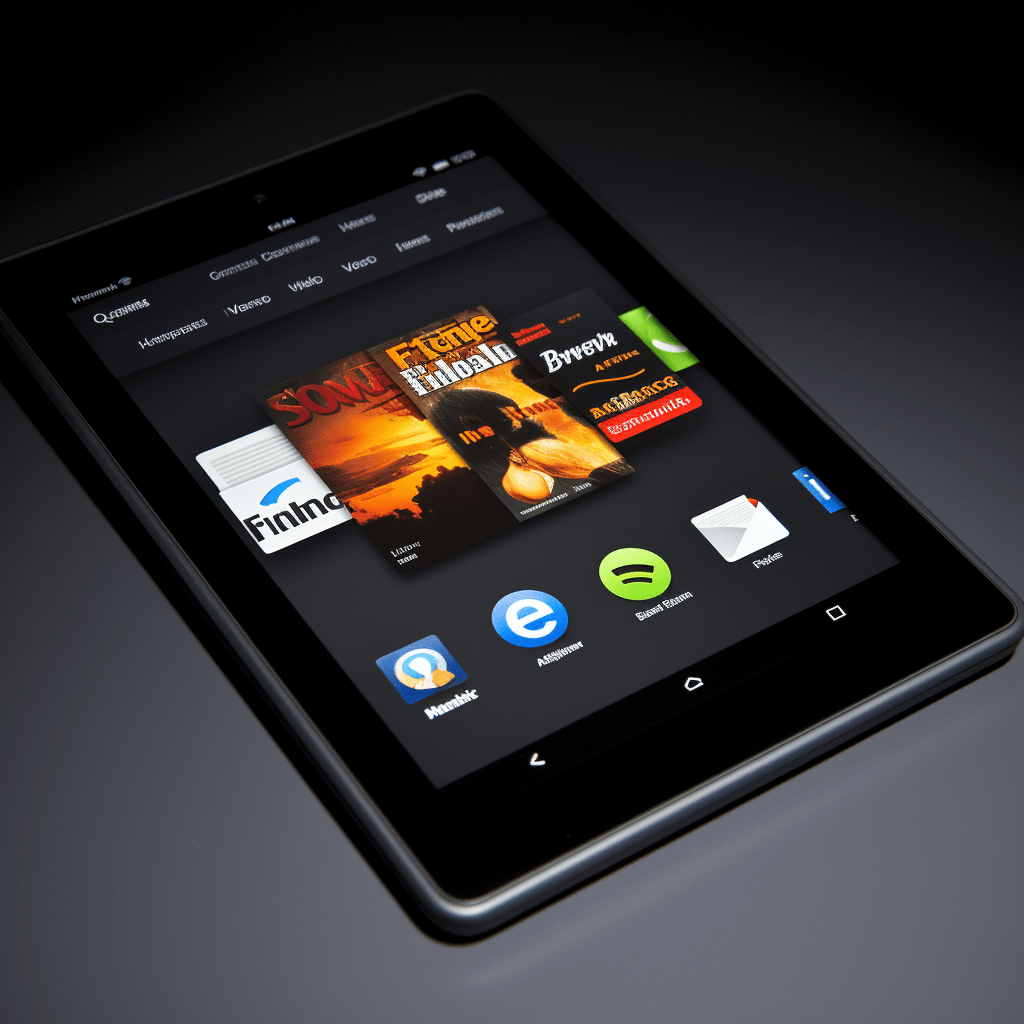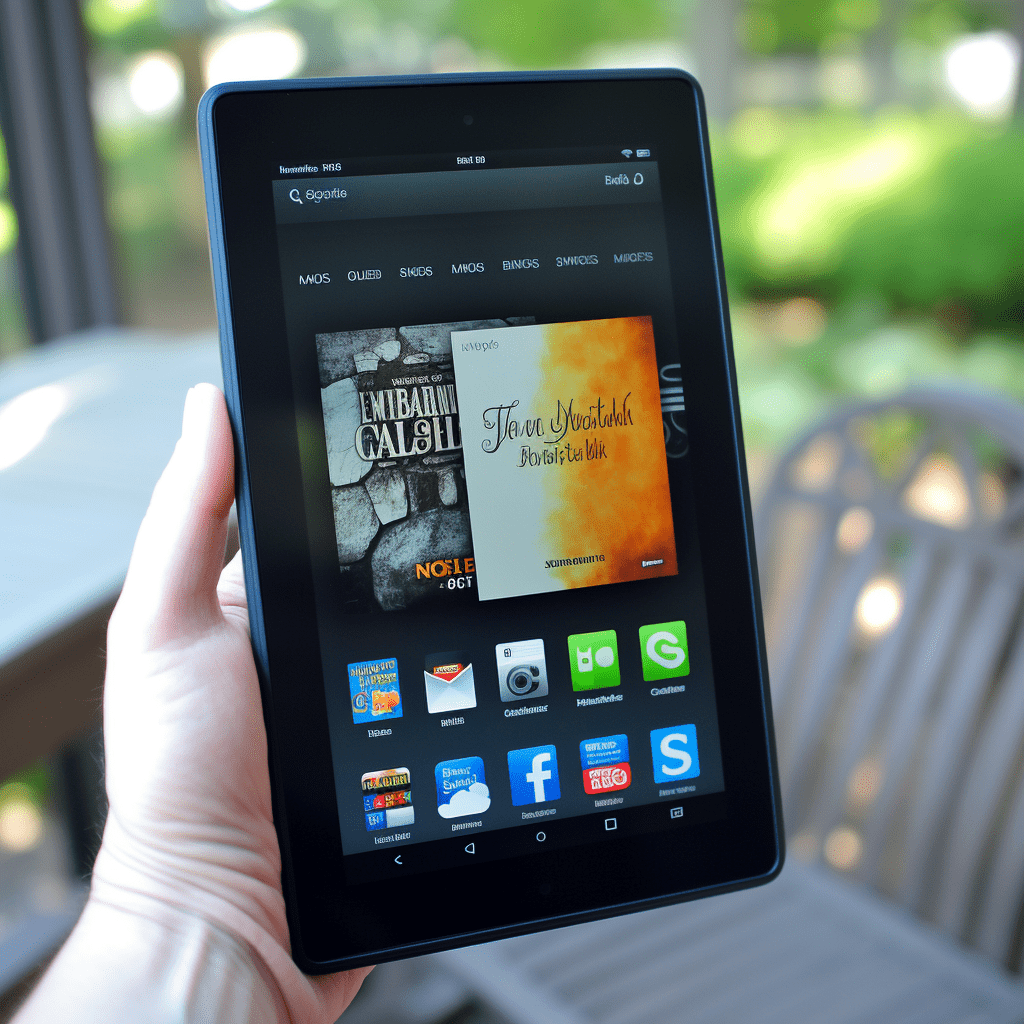How to Get to the Home Screen on Kindle
In today’s digital age, it’s no surprise that many people are turning to their Kindle devices to access books and other materials. But, did you know that you can access the Home Screen on your Kindle? It’s easier than you think!
The Home Screen is the main interface of your Kindle device and is where you can find all of your books, settings, and more. To get to the Home Screen, the first step is to understand the basics. It’s important to make sure you have the correct version of Kindle and that you know the different ways to access the Home Screen.
One way to get to the Home Screen is to press the Home button at the top of the device. This will take you straight to the Home Screen. Another way is to use the Menu button, which is located on the left side of the device.
This will bring up a drop-down menu, where you can select the Home Screen option. In addition to the basic methods, there are also a variety of instructions and tutorials available online. Many of these tutorials can provide detailed steps on how to get to the Home Screen.
It’s important to read the instructions carefully and follow the steps exactly, as they vary based on the version of Kindle you have. Knowing how to get to the Home Screen on your Kindle is the key to navigating your device.
With the right instructions and tutorials, you can easily access the Home Screen and start using your device.

Turning on Kindle Device
When it comes to using a Kindle device, it’s important to understand the basics of navigating the home screen. To power on your Kindle device, press and hold the power button located at the top of the device. After pressing the power button, allow the device to boot up and the home screen will appear.
If necessary, connect to a Wi-Fi network in order to access the web. This will enable you to access the different features of the home screen. Once you are connected, you can check the Kindle software version in the settings menu to ensure the device is up to date.
This is an important step in order to make sure you are using the latest version of the device. Follow the instructions carefully and make sure to check the software version before using the device. With the right steps, you will be able to access the home screen and start using your device.
We all know the feeling of getting a new device and wanting to learn how to use it right away. To start, power on your Kindle device by pressing and holding the power button located at the top of the device. Once the device is booted up, connect to a Wi-Fi network if necessary in order to access the web. After this is done, make sure to check the Kindle software version in the settings menu to ensure the device is up to date. Exploring the Kindle content on the home screen is often the most exciting part. Users can browse through books, magazines, newspapers, and other content available to purchase or download. This content can also be filtered by category, genre, and language. Additionally, users can access their Kindle library, which is a collection of all the items they have purchased, downloaded, or borrowed. Understanding the layout of the home screen is the key to accessing all of the features the device has to offer. The home screen can be broken down into three main components. The first component is the main navigation bar, which consists of the Kindle Store, Home, Books, Newsstand, and Settings. The second component is the content on the home screen, which includes books, magazines, newspapers, and other content. Finally, the third component is the navigation buttons, which are used to move between different pages and menus. With the basics of navigating the home screen under their belt, users can begin to gain a better understanding of how the device works.
Swiping Screen
Swiping the screen is the first step to navigating the device. A simple left to right swiping motion is all it takes to bring up the home screen. Multiple swipes may be necessary if the home screen still hasn’t appeared.
Scrolling up and down can also be used to reach the home screen. If all else fails, the navigation bar at the top of the screen can be used.
Tapping on Home Button
When it comes to navigating a Kindle, one of the key features is the Home Button. This button, located in different places on different models of Kindle, will bring you to the Home Screen – the main hub for accessing apps, books, and other content available on the device.
It is important to note that tapping on the Home Button again will also return you to the page you were viewing before.
This makes it easy to quickly switch between pages and access important content.

Examples of Home Screen
Using a Kindle can be a great way to access content quickly and efficiently, and the Home Screen is an integral part of the experience. On the Kindle Fire and Kindle Fire HD, the Home Screen is the main page where users can access all of their apps, books, music, movies, and TV shows. This Home Screen can also be customized to show different types of content, including Newsstand, Audiobooks, Shop, Docs, and Games.
For Kindle e-readers, the Home Screen is the page where users can access their library of books and other content. Additionally, the Fire tablets’ Home Screen includes a Carousel, which gives users easy access to recently used content as well as content they have yet to open.
Kindle Fire Home Screen
We all know that the Kindle Fire Home Screen is an essential part of the Kindle Fire experience. It is the main page where you can find all your apps, books, music, movies, and TV shows. In addition, the Home Screen can be customized to show different types of content, such as Newsstand, Audiobooks, Shop, Docs, and Games.
To navigate to the Kindle Fire Home Screen, press the power button located on the top of the device. The Kindle Fire Home Screen will appear with its various apps, settings, and tools to help you access the full capabilities of your device. With the Kindle Fire Home Screen, you can easily access the content you need with just a few clicks.
The ease of use and access to content makes the Home Screen an invaluable feature for users. Knowing how to navigate it properly is key. With the help of the Kindle Fire Home Screen, you can maximize the potential of your device.
Kindle Paperwhite Home Screen
This home screen is the main page which displays all the frequently used apps, access to the Kindle store, battery life and time remaining until the device is fully charged. To navigate to the Kindle Paperwhite Home Screen, all you have to do is press the home button located at the bottom of the device.
This simple and easy-to-use feature makes it easy for users to find what they need. With the Kindle Paperwhite Home Screen, users can quickly access their library, store, device settings, and more.
FAQs

Q What are the different ways to get to the Home Screen on Kindle?
Navigating the Home Screen on your Kindle Paperwhite device is essential for a superior user experience. There are several different ways to do this: press the Home button located at the bottom of the device to get back to the Home Screen, or use the Back button. Alternatively, navigate the Menus to find the Home Screen. All of these methods are simple, easy to use and make it easy for Kindle Paperwhite users to quickly access their content and settings.
The ease of finding the Home Screen on your Kindle Paperwhite device is critical. Not only does it make it simple to access content and settings, but it also helps create a better user experience. The Home button and Back button are both efficient ways to quickly get back to the Home Screen. Furthermore, the Menus provide a helpful way to access the Home Screen, with all options being easy to use.
A
To access the Home Screen on Kindle, you can press the Home button located at the top of the device. This is the quickest and most user-friendly way of getting to the Home Screen.
You can also navigate to the Home Screen by selecting the Home icon or swiping left or right. Additionally, you can use the Back button to return to the Home Screen at any time.
Furthermore, you can press and hold the Home button to quickly return to the Home Screen. With all of these different methods, you can easily find your content and settings on the Home Screen of your Kindle Paperwhite device.
Q How do I turn on my Kindle Device?
All it takes is a simple press of the Home button located on the top of the device. This will immediately take the user to the Home Screen, where all their content and settings can be found.
But what about turning on the device? To power on the Kindle Paperwhite, press and hold the power button on the top of the device for 5 to 10 seconds.
Once the device is powered up, the Kindle Home Screen will be displayed.
If the device does not turn on at first, press the power button for 10 seconds or longer. When this is done correctly, the device will turn on and the Home Screen will appear.
A
After all, navigating the Home Screen can be a daunting task for any user. Fortunately, we can make this process a lot easier by taking a few simple steps. First and foremost, press the Home button located at the top of the device. Once the button is pressed, the Home Screen will appear on the device. From here, users can access their library, store, and settings menu.
However, users should be aware that they can only access the Home Screen when the device is turned on. To power on the Kindle Paperwhite, press the power button on the top of the device for 5 to 10 seconds. Once the device is powered up, the Kindle Home Screen will be displayed. If the device does not turn on at first, press the power button for 10 seconds or longer. A successful power on will result in the Home Screen appearing on the device.
With these simple steps, navigating the Home Screen on Kindle Paperwhite should now be a breeze!
Navigating the Home Screen on a Kindle Paperwhite can be a tricky task for many users. In order to make it easier, it is important to understand the process of accessing and navigating the Home Screen. One way to access the Home Screen is by swiping left from the main screen of the device. This will bring up the Home Screen, which contains your library, store, and settings menu. Additionally, the Home Screen can be accessed from the top menu bar by selecting the Home icon.
When navigating the Home Screen, users should also be aware that they can only access the Home Screen when the device is powered on. To power on the Kindle Paperwhite, press the power button on the top of the device for 5 to 10 seconds.
Once the device is powered up, the Kindle Home Screen will be displayed. If the device does not turn on at first, press the power button for 10 seconds or longer. Another helpful tip when navigating the Home Screen is to use the search bar located in the upper-right corner. This will allow users to easily access a specific book or app.
A
Navigating the Home Screen on a Kindle Paperwhite can be a tricky task for many users. Fortunately, there are a few easy ways to access the Home Screen. The first is to press the Home button on the device itself. Alternatively, users can swipe from the left side of the screen to the right to reach the Home Screen.
Additionally, pressing the Back button several times will bring up the Home Screen as well. Finally, for those with certain Kindle devices, voice commands can be used to get to the Home Screen. With a few simple steps, accessing the Home Screen on the Kindle Paperwhite should now be a breeze!
Q What are the different types of Home Screens?
With the press of a button, a swipe of the finger, or even a voice command, users are given access to the Home Screen. But what different types of Home Screens are available? The two main types of Kindle home screens are the Quick Actions bar and the Carousel.
The Quick Actions bar gives users quick access to common tasks such as searching, shopping, and adjusting settings. Meanwhile, the Carousel displays recently viewed items, making it easy to find previously accessed content.
Another helpful feature that Kindle Paperwhite offers is the ability to customize the Home Screen to the user’s preference. This way, the Home Screen can be tailored to fit the user’s needs and make navigation even easier.
In conclusion, the Kindle Paperwhite has two main types of Home Screens, the Quick Actions bar and the Carousel. Both provide easy access to different tasks and content, and the Home Screen can be customized to fit the user’s needs.
A
Navigating the Home Screen on a Kindle Paperwhite is a breeze. With just a button press, a swipe of the finger, or a voice command, users are quickly taken to the Home Screen.
The Home Screen on a Kindle Paperwhite consists of two main components: the Quick Actions bar and the Carousel. The Quick Actions bar provides easy access to common tasks such as searching, shopping, and adjusting settings.
Meanwhile, the Carousel displays recently viewed items, allowing users to quickly find previously viewed content.
Kindle Paperwhite users can customize their Home Screen to better suit their needs. This way, the Home Screen can be tailored to the user’s liking and make navigation even smoother.
In conclusion, navigating the Home Screen on a Kindle Paperwhite is a simple process thanks to the Quick Actions bar and Carousel. Furthermore, users can customize their Home Screen to make navigation even easier.
Q What are the differences between Kindle Fire Home Screen and Kindle Paperwhite Home Screen?
When it comes to navigating the home screen on a Kindle, there are two distinct models: the Kindle Fire Home Screen and the Kindle Paperwhite Home Screen. While both provide a basic home screen experience, there are a few key differences between them.
The Kindle Fire Home Screen offers a highly customizable layout that allows users to customize their backgrounds, add widgets, and access their favorite apps. In addition, it includes a carousel view, which offers a more interactive user experience.
On the other hand, the Kindle Paperwhite Home Screen has a more simplified layout with a single homescreen featuring the user’s library, store, and a search bar.
Overall, the Kindle Fire Home Screen is more customizable and interactive, while the Kindle Paperwhite Home Screen is more focused on simplicity.
A
Fortunately, understanding the Kindle Home Screen is not as difficult as it may seem. With a few simple tips, users can quickly learn how to navigate the home screen and make the most of their device.
First, users should familiarize themselves with the basics of the Kindle Home Screen. This includes the library, store, and search bar. Knowing how to access these features is essential for any user who wants to make the most of the Kindle experience.
Next, users should learn how to navigate the Kindle Home Screen. The home screen layout is designed to make it easy to find the content and features you need. To get the most out of the experience, users should take the time to explore the various features, such as the carousel view, which offers a more interactive user experience.
After becoming familiar with the basics of the Kindle Home Screen, users can begin to customize their experience. The Kindle Fire Home Screen allows for a highly customizable layout, allowing users to add widgets, customize their backgrounds, and access their favorite apps. On the other hand, the Kindle Paperwhite Home Screen has a more simplified layout. Knowing the differences between the two can help users decide which model is right for them.
Finally, users should take the time to explore the features of the Home Screen and customize it to suit their needs. From adding widgets to changing backgrounds, users can tailor their Kindle experience to fit their needs. This will ensure a personalized and unique experience.
